Aftermath of the August 2022 Shoal Creek Flood
August 26, 2022 | By Shoal Creek Conservancy
On Monday, August 22, 2022, a record-breaking downpour dropping nearly five inches of rain in three hours caused Shoal Creek to flood, reaching its highest level since 2015. Numerous photos, videos, and news stories have documented the incredible surge of water as well as its aftermath.
- Shoal Creek Conservancy Facebook Album – August 22, 2022 Shoal Creek Flood
- Culturemap Austin – Photos
- KVUE – Video: Shoal Creek overflows in Downtown Austin
- CBS Austin – Thunderstorms Flood Parts of Central Austin
While extreme weather events such as flash flooding are not new to Shoal Creek, the damage to surrounding parkland, trails, and the mess left along the banks of the creek must now be addressed.
Mud, debris, and trash rose with the flood water and was then filtered out by trees and other plants when the water receded, leaving the banks and riparian vegetation littered with trash.
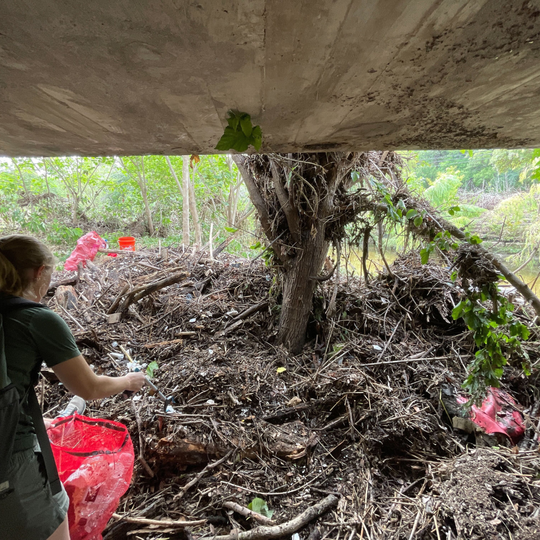
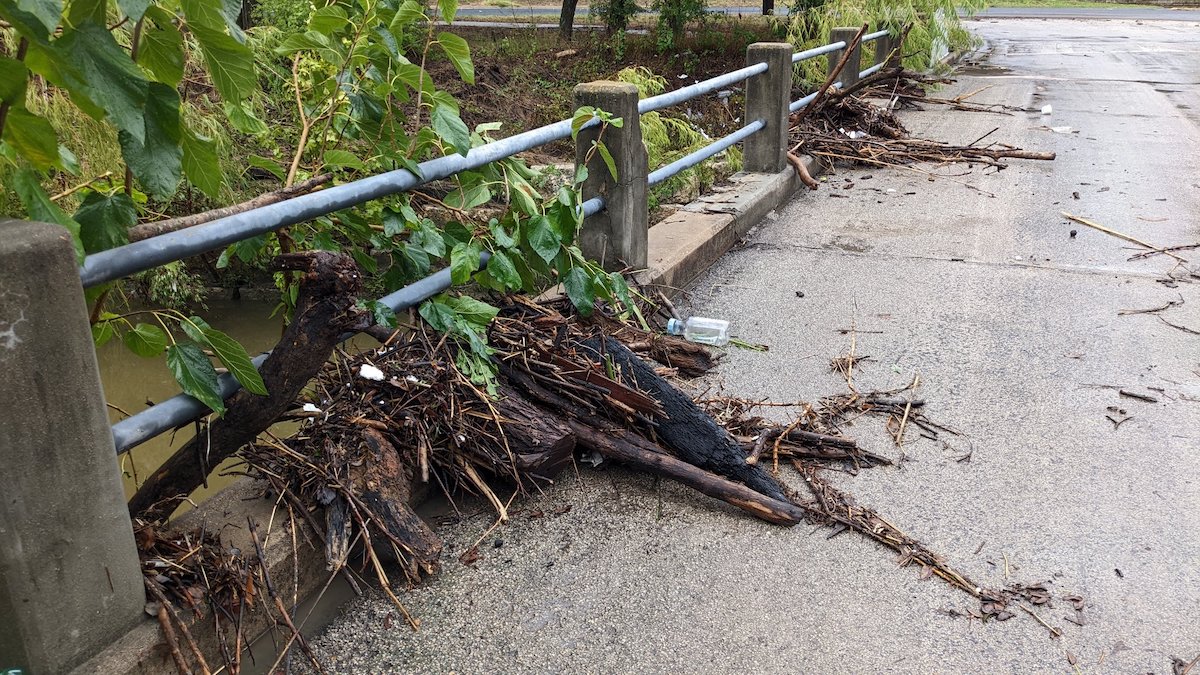
In addition, the rush of water resulted in fallen retaining walls, massive gaping holes in the land, and sections of trail washed away.
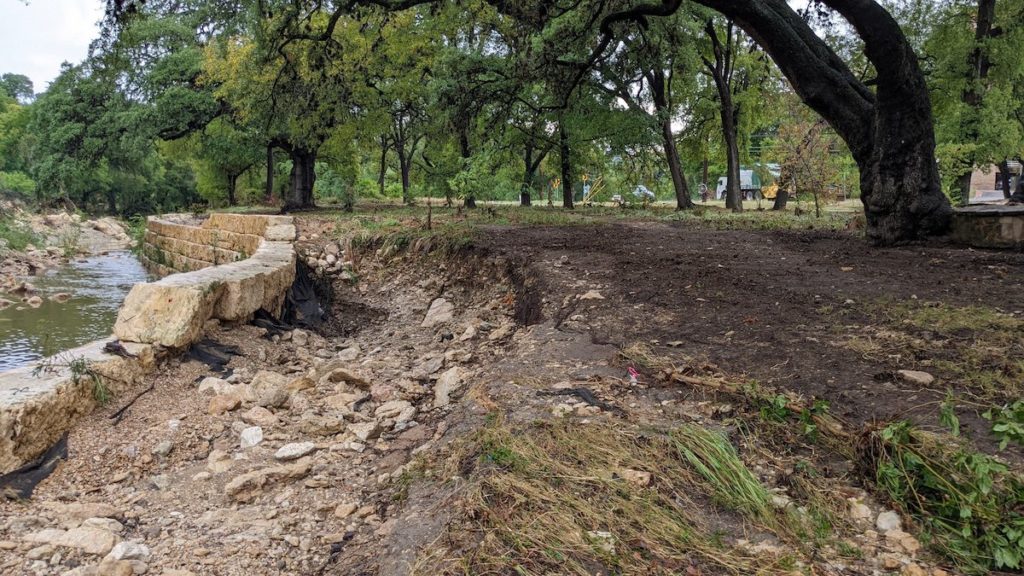
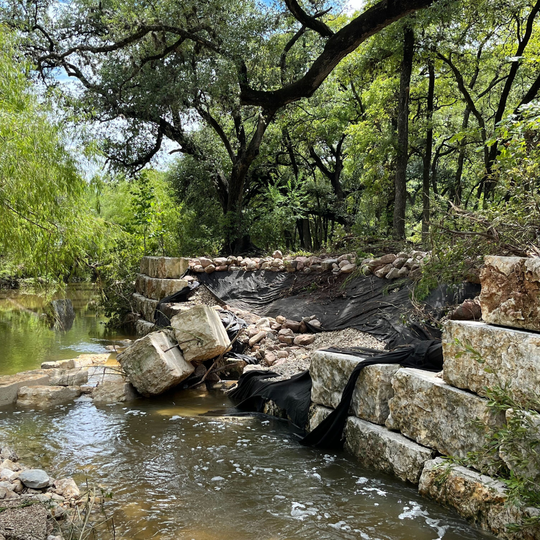
Unfortunately, the debris that made its way into the creek could potentially result in higher than usual bacterial levels, so people and pets are advised to stay out of the water.
A bright spot is the resilience of the native species recently planted as part of an ecological restoration project on the east bank of Shoal Creek near Seiders Springs. One element of this project has been the removal of an invasive elephant ear monoculture, and replacement with a more diverse native planting. After this week’s flood, we were encouraged to see that, despite being less than a year old, our native plantings largely survived. The emory sedge we planted showed how especially well suited it is for the job: instead of being uprooted, it laid flat under the rushing floodwaters, while its dense and fibrous roots secured the creek bank.
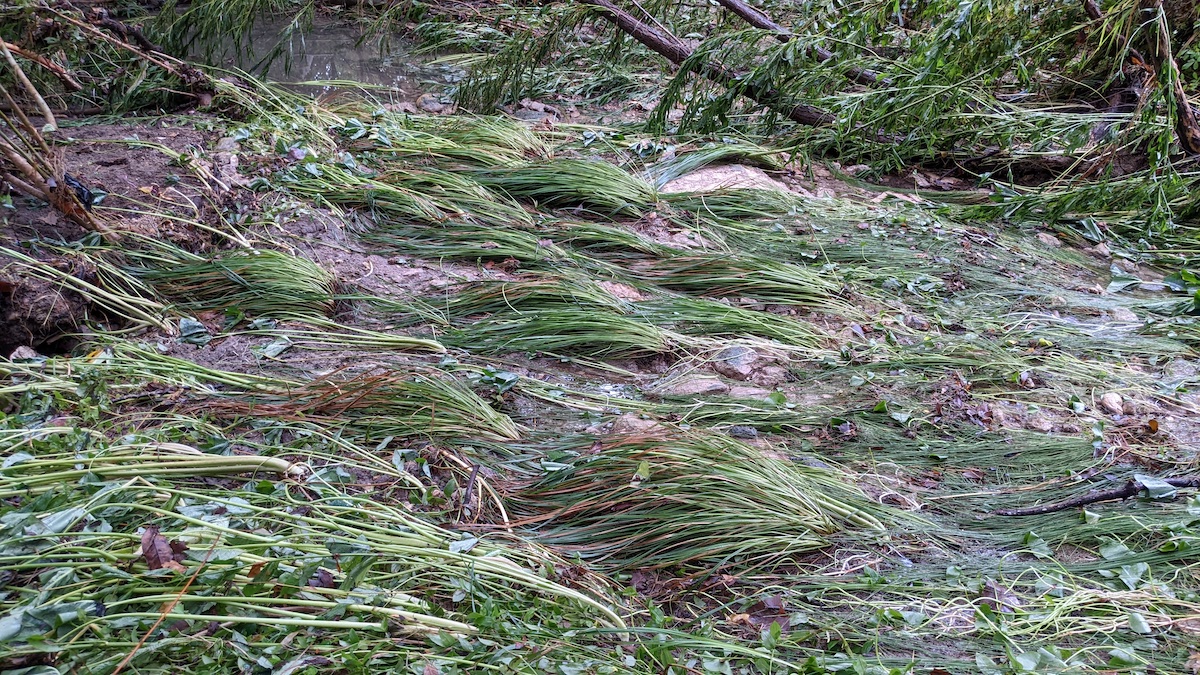
Native riparian plants are given a stability rating (0-10) that describes how well a species can withstand the erosive force of floodwater, with 0 being equivalent to bare soil, and 10 being equivalent to anchored rock. Emory sedge has a stability rating of 9. Several other native species that were planted survived the flood in the same way – by laying flat under the rushing water. A few fallen trees that we left on-site did their job trapping sediment and protecting some of the more delicate species on the margins of the planting. Meanwhile, a nearby patch of elephant ear was mostly uprooted, a demonstration of its shallow roots and unsuitability for streambank stabilization. Native plants for the win!
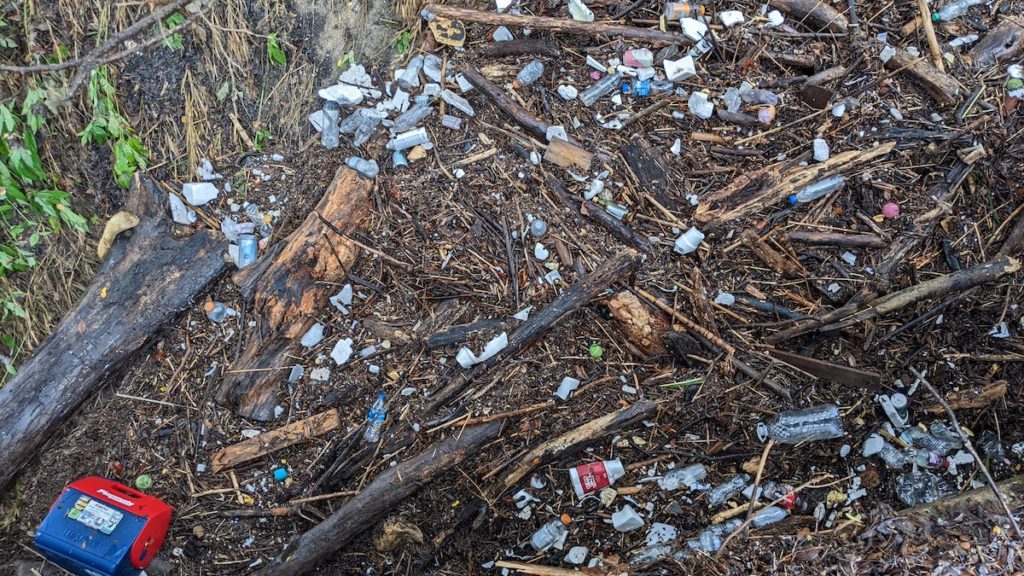
After quickly mobilizing to assess the effects of the flood, Shoal Creek Conservancy and Pease Park Conservancy launched a unified severe weather response team that will get out to the banks of Shoal Creek with grabbers and trash bags to collect the trash, limbs, and debris that currently line the sides of the trail. And, the team will help inform and support the City of Austin in its efforts to repair retaining walls and other damage to the land and trails.
- KXAN – Sever Weather Response Team Launched After Shoal Creek Floods
- CBS Austin – Cleanup Starts on Flood Damage from Austin’s Record-Setting Rain
SCC and PPC have partnered to raise $25,000 to help with cleanup activities, which includes the need for specialized equipment to clear out very dense debris and turn it into mulch, and to plan for future severe weather events. All donations will be split 50/50 between Shoal Creek Conservancy and Pease Park Conservancy.
How you can help…
Donate to the PPC/SCC Emergency Response Effort
Volunteer at a Post-Flood Cleanup
Thank you for continuing to support our efforts and Austin’s beloved Shoal Creek!
